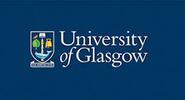CONFERENCE
4-Manifolds: From Above and Below
4 variétés: à travers les dimensions
12 – 16 September 2022
Scientific Committee
Comité scientifique
Michel Boileau (Aix-Marseille Université)
Christine Lescop (CNRS, Université Grenoble Alpes)
Andras Stipsicz (Hungarian Academy of Sciences)
Abigail Thompson (University of California, Davis)
Organizing Committee
Comité d’organisation
Anthony Conway (Massachussetts Institute of Technology)
Stefan Friedl (University of Regensburg)
Ana Lecuona (University of Glasgow)
4-dimensional topology offers a unique array of open problems in low dimensional topology. Several of these problems have been solved in higher and lower dimensions, by methods ranging through a wide range of topics. Indeed, in dimension 3, spectacular results have been obtained by successfully harnessing the bridge between topology and geometry, while in dimensions greater than 4, surgery theory provides a toolkit for understanding the classification of manifolds.
Another attractive feature of 4-dimensional topology lies in its connections with other fields. For instance, work in topological category often relies more heavily on methods coming from algebra, while results in the smooth category frequently involve gauge theory and symplectic geometry. On the other hand, the burgeoning study of trisections buildson analogies with 3-dimensional Heegaard splittings, while also drawing on tools from symplectic and contact geometry.
For these reasons, this workshop will assemble both experts in 4-dimensional topology as well as manifold topologists from neighboring fields. Through talks on a variety of topics as well as discussion sessions, the goal is to pool the knowledge from all of these areas in order to stimulate progress on some of the outstanding problems in 4-dimensional topology, as well as to shape future directions of research in this area.
La topologie en dimension 4 offre un éventail unique de problèmes ouverts, plusieurs desquels ont été résolus en tout autre dimension. En effet, en dimension 3, des résultats spectaculaires ont été obtenus en exploitant les connections entre la topologie et la géométrie, alors qu’en dimensions supérieures, la théorie de la chirurgie fournit les outils nécessaires à des résultats de classification.
Un autre attrait de la dimension 4 réside dans ses liens étroits avec des do-maines connexes. Par exemple, dans la catégorie topologique, l’algèbre est souvent de mise, alors que dans la catégorie lisse, la théorie de jauge et la géométrie symplectique sont fréquemment invoquées. Quant à l’étude des trisections, elle trouve son inspiration dans la théorie 3-dimensionelle des scindements de Heegaard, tout en puisant dans les géométries symplectiques et de contact.
Pour ces raisons, cette conférence a pour but de rassembler aussi bien des experts en topologie de dimension 4, que des topologues travaillant dans des domaine adjacents. Au travers d’exposés et de discussions, l’objectif est de rassembler des chercheurs dans tous ces domaines afin de stimuler le progrès sur les problèmes majeurs en topologie de dimension 4, ainsi que de former le futur de la recherche dans ce domaine.
Mini-courses
Jen Hom (Georgia Institute of Technology) Heegaard Floer homology, knot concordance, and connections to 4-dimensional topology
Daniel Kasprowski (University of Bonn) Surgery theory and the classification of 4-manifolds
Marco Golla (Université de Nantes) Symplectic 4-manifolds
Speakers
Inanç Baykur (University of Massachusetts Amherst)
Feride Ceren Köse (The University of Texas at Austin)
Manuel Krannich (Karlsruhe Institute of Technology)
Peter Lambert-Cole (University of Georgia)
Beibei Liu (Georgia Institute of Technology)
Maggie Miller (Stanford University)
Tom Mrowka (MIT)
Anubhav Mukherjee (Georgia Institute of Technology)
Kouichi Yasui (Osaka University)
SPONSORS



